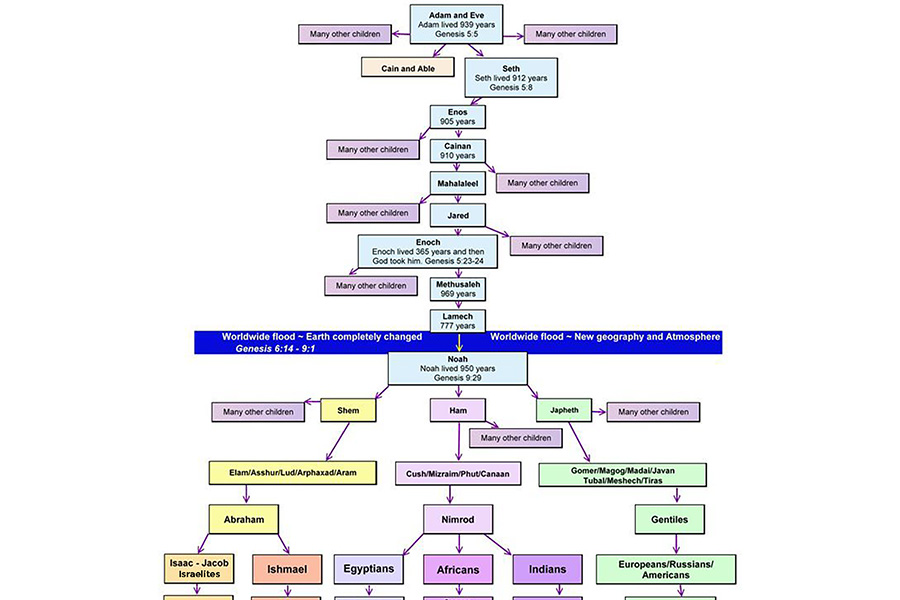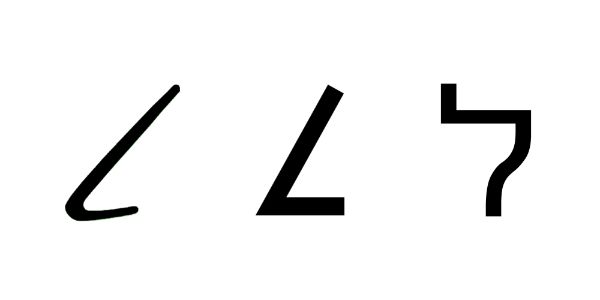The compound word Dabaray HaYauamayam (𐤃𐤁𐤓𐤉־𐤄𐤉𐤅𐤌𐤉𐤌) or “Chronicles” is known as a book of scriptures that contains a genealogy starting from 𐤀𐤃𐤌 (Adam), and a narrative of the history of ancient 𐤉𐤄𐤅𐤃𐤄 (Yahauadah) / 𐤉𐤄𐤉𐤃𐤄 (Yahayadah) and 𐤉𐤔𐤓𐤀𐤋 (Yasharaal) until the proclamation of King 𐤊𐤅𐤓𐤔 (Kauarash) the Great. The word combines 𐤃𐤁𐤓 (dabar) meaning “an account” or “speak” and 𐤉𐤅𐤌 (yauam) meaning “day”.
The Paleo-Hebrew language or the original language of the Ābarayam is one spoken with an emphasis on the rauakh (breath, wind, spirit). With the language of the Ābarayam, each letter has a meaning and a number associated with it that adds meaning to each word they’re used with. Below you will be able to learn more about the letter in Ancient Hebrew, Yiddish Hebrew, Greek, and much more.
Letter Meanings
| Letter | Meaning |
|---|---|
| 𐤃 (d) – da | Tent door, pathway |
| 𐤁 (b) – ba | House, family, “in” |
| 𐤓 (r) – ra | head and person, man, beginning, top, rule, inheritance, possession |
| 𐤉 (y) – ya | arm, hand, work, thrust, deed, make, throw, worship Suffix: establishes a relation to, descendant of, the likeness of. |
| – | – |
| 𐤉 (y) – ya | arm, hand, work, thrust, deed, make, throw, worship Prefix: he/she, turns a word third person |
| 𐤅 (u) – ua [ýa] | and, nail, tent peg, hook, to secure, connect, Messiah |
| 𐤌 (m) – ma | water, chaos, mighty, liquid, massive, sea, blemish |
| 𐤉 (y) – ya | arm, hand, work, thrust, deed, make, throw, worship Suffix: establishes a relation to, descendant of, the likeness of. |
| 𐤌 (m) – ma | water, chaos, mighty, liquid, massive, sea, blemish Suffix: them in feminine form. Suffix: when preceded by 𐤉 (yad) creates a plural of people. |
| Ābarayat Number | 322 = 4 (d) + 2 (b) + 200 (r) + 10 (y) + 10 (y) + 6 (u) + 40 (m) + 10 (y) + 40 (m) |
| Hebrew Gematria | |
| English Gematria | |
| Simple Gematria |
Based on the meaning of the letters the word could be defined as:
- “pathway of family of inheritance to create man of work to secure a multitude for worship of mighty”
Definitions for 𐤃𐤁𐤓𐤉־𐤄𐤉𐤅𐤌𐤉𐤌 / Dabaray HaYauamayam
| Language | Word | Transliteration | Pronunciation | Definition |
|---|---|---|---|---|
| Ābarayat | 𐤃𐤁𐤓𐤉־𐤄𐤉𐤅𐤌𐤉𐤌 | Dabaray HaYauamayam | daw-ba-rey ha-ya-ooma-yawm | “Account of The Days” |
| English | Chronicles | Chronicles | kron-i-kuhl | |
| Hebrew | דִּבְרֵי־הַיָּוֹמִים | Divrei HaYamim | daw-bar’-ee ha-yome-ee-m | “The Matters of the Days” |
| Arabic | سجلات | sajilat | soo-jee-lat | records, archives, Chronicles |
| Greek | ἐγγράφω | eggraphó | eng-graf’-o | to inscribe, to enter in a register |
Images for 𐤃𐤁𐤓𐤉־𐤄𐤉𐤅𐤌𐤉𐤌 / Dabaray HaYauamayam


Definitions for /
When adding the 𐤉 (yad) to the end of a word, it creates a possessive of the original word. It can either signify “my…” or identify a member of a nation. For example, 𐤏𐤁𐤓 (Ābar) is the progenitor, but 𐤏𐤁𐤓𐤉 (Ābaray) is the singular descendant of him also known as a Hebrew.
| Language | Word | Transliteration | Pronunciation | Definition |
|---|---|---|---|---|
| Ābarayat | ||||
| English | ||||
| Hebrew | ||||
| Arabic | ||||
| Greek |
Images for /


Definitions for /
When adding the 𐤌 (mayam) after the 𐤉 (yad) to the end of a word, it creates a plural of the original word. It can identify multiple members of a nation. For example, 𐤏𐤁𐤓 (Ābar) is the progenitor, but 𐤏𐤁𐤓𐤉𐤌 (Ābarayam) are the plural descendants of him also known as Hebrews.
| Language | Word | Transliteration | Pronunciation | Definition |
|---|---|---|---|---|
| Ābarayat | ||||
| English | ||||
| Hebrew | ||||
| Arabic | ||||
| Greek |
Images for /


Definitions for /
When adding the 𐤕 (tau) after the 𐤉 (yad) to the end of a word, it creates a plural of the original word. It identifies the language or a sign of a nation’s existence. For example, 𐤏𐤁𐤓 (Ābar) is the progenitor, but 𐤏𐤁𐤓𐤉𐤕 (Ābarayat) is the language of him also known as Paleo-Hebrew language.
| Language | Word | Transliteration | Pronunciation | Definition |
|---|---|---|---|---|
| Ābarayat | ||||
| English | ||||
| Hebrew | ||||
| Arabic | ||||
| Greek |
Images for /


Classification
You can continue your studies of the words by viewing Strong’s entries for:




